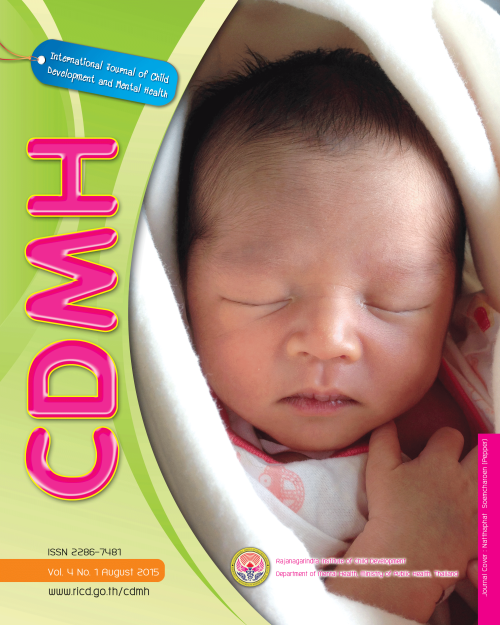Factors Influencing Nail Biting Habit in Children with ADHD
Main Article Content
Abstract
This research aims to identify risk factors for developing nail biting (NB) habits among children with Attention Deficit Hyperactivity Disorder (ADHD). This study recruited 109 children diagnosed with ADHD. Their ADHD relevant components were assessed by questionnaire, and the subjects were divided into NB or non-NB groups. These two groups were compared for their ADHD subtypes, comorbidity (including Oppositional Defiant Disorder (ODD) and anxiety depression), and acquired family risks. From statistical analyses, we found that ADHD children with a nail-biting habit were generally younger, and many belonged to the ADHD combined subtype (ADHD-C). We also noted that many of their parents had marital discord and poorer stress management skills, compared to the parents of ADHD children without a nail-biting habit. Their mothers were generally older than the mothers of ADHD children lacking a nail-biting habit. Logistical regression confirmed that nail biting among ADHD children was correlated with ADHD-C subtype (OR = 2.73; p = 0.016) and parental marital discord (OR = 5.11; p = 0.007). Further, from comorbidity analyses, a nail-biting habit among ADHD children was associated with maladjustment disorder, and not with anxiety disorder commonly seen in ADHD patients. Therefore, nail biting is a possible indication of the presence of the more severe ADHD-C subtype. Our results imply that a nail biting habit among these ADHD children is more related to insufficient parenting skills, rather than being part of general anxiety symptoms.
Article Details
![]()
Creative Commons License
This work is licensed under a Creative Commons Attribution-NonCommercial-No Derivatives 4.0 International (CC BY-NC-ND 4.0)
The authors retain copyright and permit the journal the copyright of first publication
Articles, once having passed the review process and accepted for publication in the CDMH Journal, are copyrighted under the CDMH Journal, Department of Mental Health, Ministry of Public Health. Please be aware distribution of CDMH Journal content for commercial purposes without permission is expressly prohibited. However, distribution with intent to educate, advocate, or spread awareness within the general public and research communities is permitted and encouraged with the understanding that the CDMH Journal Editorial Board do not hold jurisdiction or liability for any accompanying comments, text, or information from third parties, either in favor for or against the original article’s assertions, conclusions, methodology, or content.


